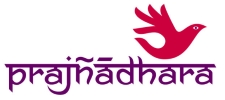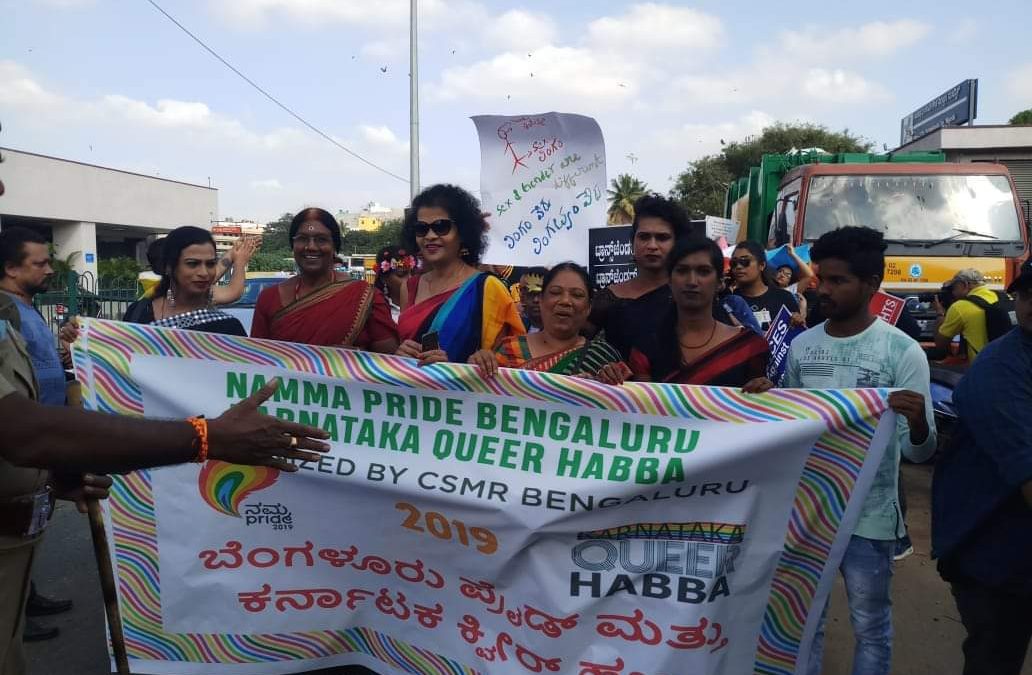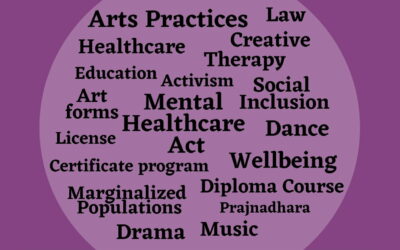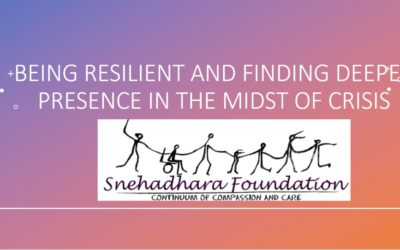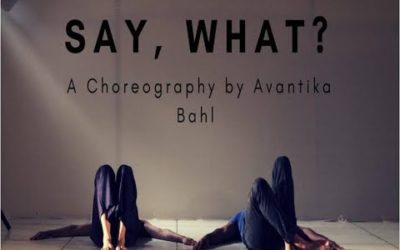

It seemed like three parades walked from Majestic Metro Station to Town Hall in Bangalore yesterday. The Pride Parade in the middle and onlookers on either side of the revelling queer crowd. Somewhere in the middle, Aishwarya, a transgendered person clad in a black chiffon sari reminiscent of Pakistani ghazal singer Iqbal Bano’s iconic rebellion against president Zia-ul-Haq, was eating pani puri. Before she was able to pop the last puri, I gingerly managed a hello, fearing spillage. What do you reckon the onlookers are thinking about when they look at you? I asked. ‘They’re looking and thinking there’s no woman more beautiful than me,’ she said cheerfully.
Every year in November, a sizeable number of the LGBTQ population in the city and beyond, march to celebrate the freedom of preference, dignity, love and community. Since the Supreme Court’s September 2018 ruling decriminalising consensual sexual acts between adults who identify as LGBTQ, the parade has become a march of celebration but also a reminder of the many battles for equal rights that lie ahead. This year many like Aishwarya wore black to protest against the Transgender Bill, 2019 which marks a rather parochial shift in the policy thinking about transgender rights. I was curious to know what the marchers and onlookers thought about the other? Did they feel included in the other’s ranks?
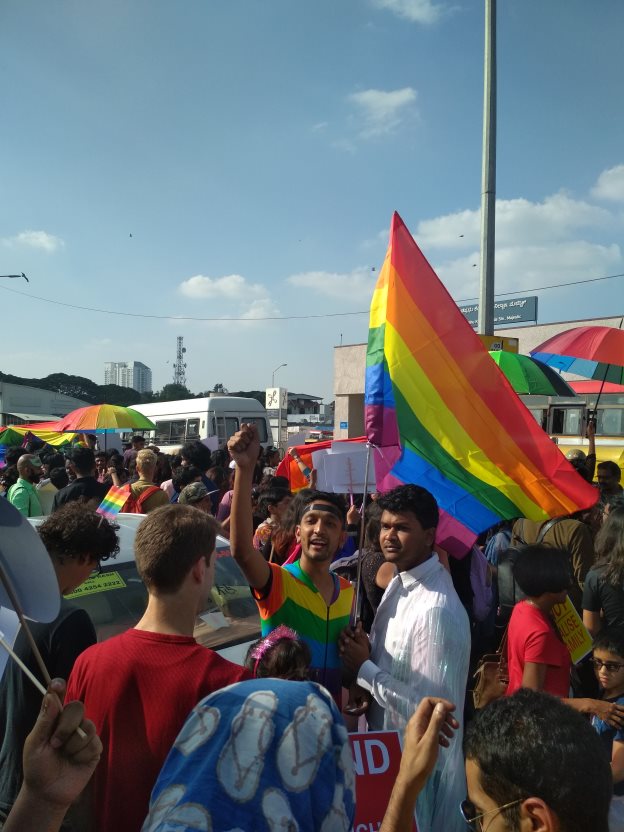 |
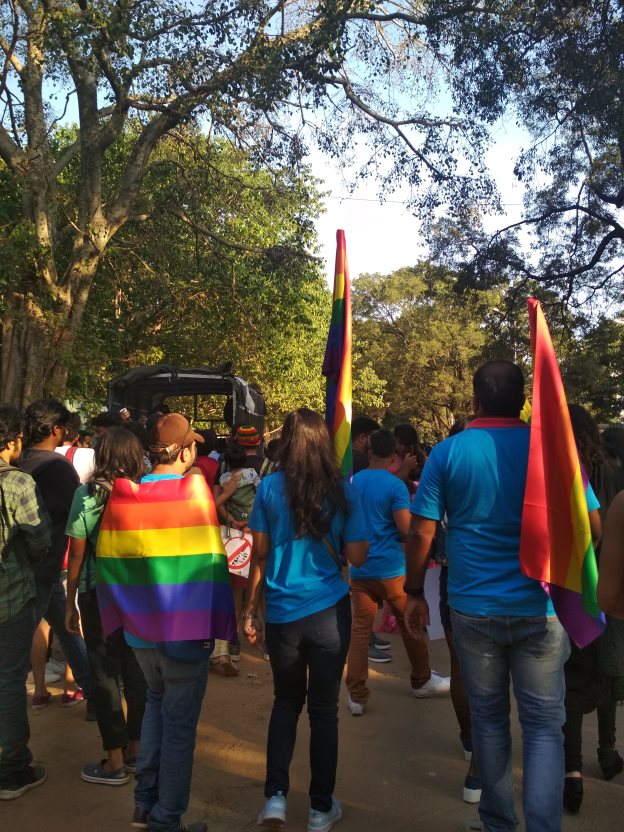 |
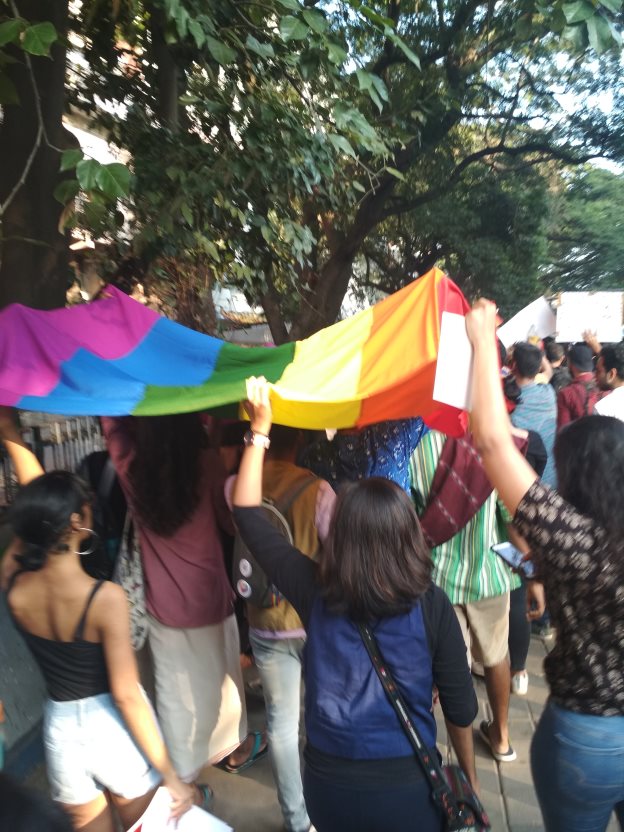 |












Unlike the onlookers who took up arms against the military regime tasked with evicting a formidable Bano singing ‘Jab Zulm-o-Sitam ke koh-e-garan rooi ki tarah ur jaenge… Hum Dekhenge’ (when the enormous mountains of tyranny blow away like cotton… it is certain that we too shall witness), these persons looked on, their inscrutable gaze striking me as a curious phenomenon. Some took pictures and videos while others whispered in each other’s ears. Joseph, a sixty something auto driver from Kerala with the kindest eyes extended a hand ‘it is sad that these people (onlookers) don’t know what is going on. People should be taught to celebrate alternative sexual preferences from school. But what are the people who are marching doing to include the onlookers?’ I jumbled some words in a hasty defence pointing to information flyers strewn around on the road. But reflecting on Joseph’s words, a colleague and I began to speak with marchers and onlookers. Our question was simple, what do you think the others are thinking about looking at you?
‘Business channagidiya?’ (is business good?) I asked the street vendors, and everyone but the murmura seller who was late to join the party nodded affably. Many did not know why people were marching but were thrilled about getting their custom. Pilgrims to Sabarimala Temple seemed resistant to speak with us but a gangly teenager who seemed to know them said it was about being proud about one’s sexual preference. A bunch of fourteen year olds were wondering about how to cross over to the playground on the other side of the parade for some afternoon cricket. ‘A fun parade’ they said. Many of the drivers engaged by the organisers were also curious about what was going on. A young couple said the colours were really beautiful. Many onlookers thought we were protesting about something. A couple and their middle aged son said they had travelled 22 kilometers to come and see the celebrations. Almost everyone I waved at or offered a namaste responded with courteous greetings.
On the other side things appeared similarly poised. ‘I know these streets and these people. They’re curious,’ said forty year old Chandni, a trans woman who seemed to have the last word about what’s going on. A group of twenty year old gay men said they didn’t care about the onlookers or what they were thinking, while a nearby megaphone blared ‘We’re out, we’re proud, get used to it.’ A twenty year old law student had come to the parade with friends from law school. ‘I’m straight but my friends and I were curious about how it feels to be a part of the parade. It’s an amazing experience.’ ‘It’s all about love,’ his friends chimed in. Two drag queens mentioned it doesn’t matter what people think but they felt safe. ‘They’re just curious,’ said forty year old Jyoti. Like me this was her first Pride in Bangalore. Further on a six and four year old pair of siblings were marching with their parents. The dinosaur on my tote bag led discussions with the four year old boy who said it was a very happy place. Somewhere near Anand Rao Circle a young man sat barefoot looking intently at the people who marched past. We asked him where he was from and if he had lost something? I came here eight years ago with my partner. I’m looking for him now, I’m looking for my ‘anbu’ (tamil for Love).’
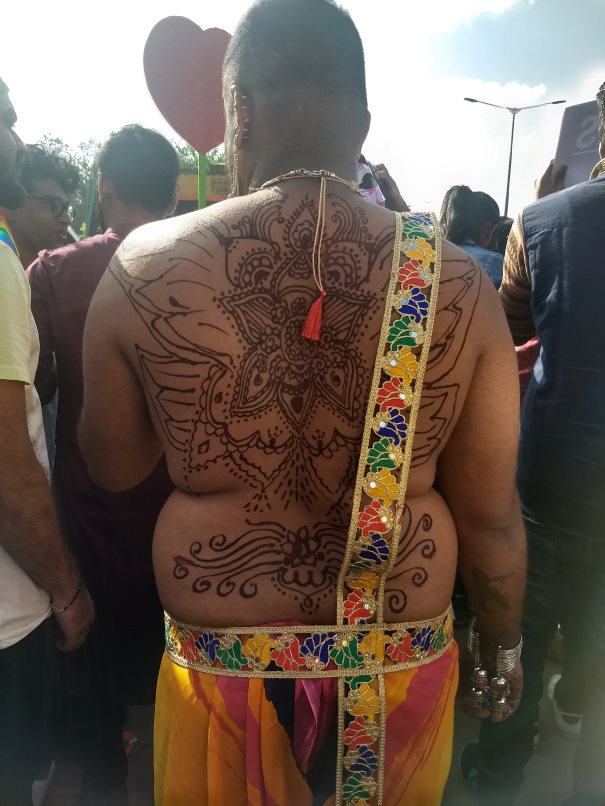 |
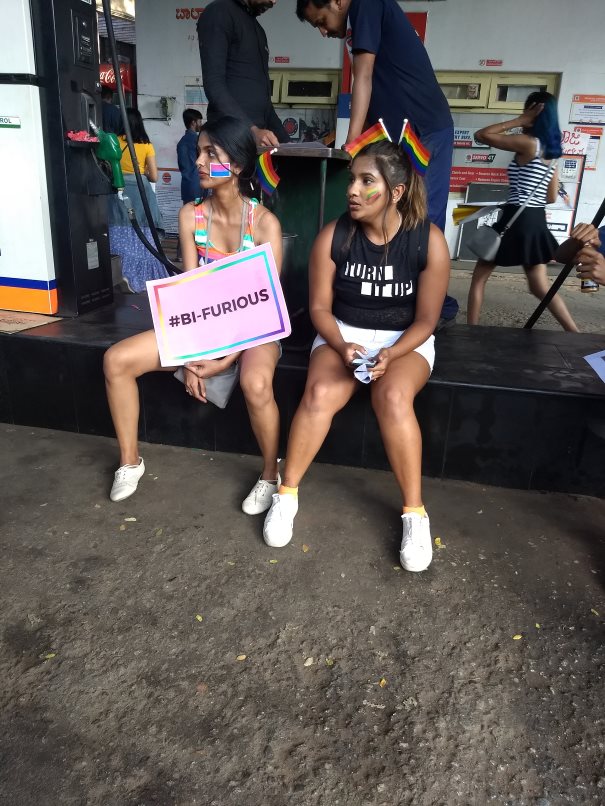 |
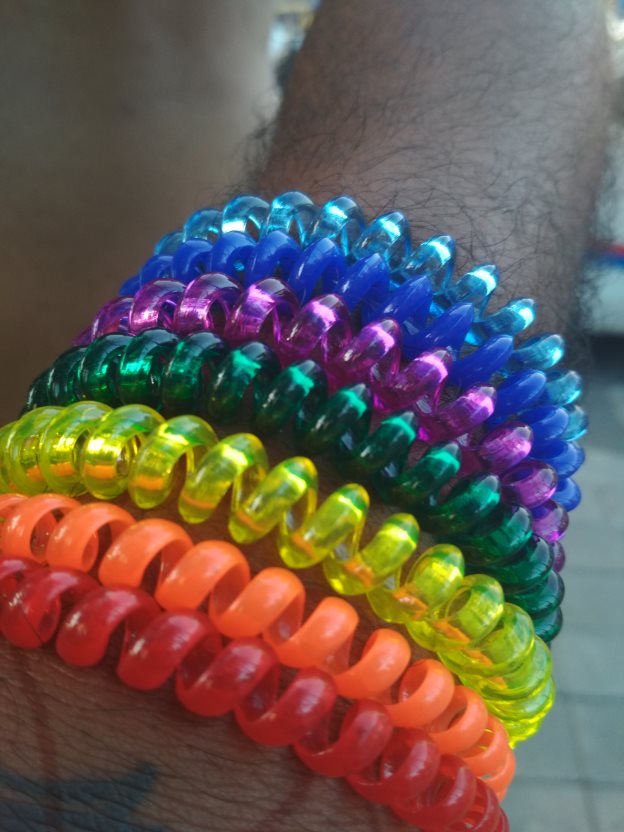 |



https://www.pacificadayspa.co.uk/press-room/click here for morecheck hereferienhaus-suencksenreplica bretling watchesphone case store near meelf bar 600









I wondered about including the mainstream as the parade passing through a mainstream milieu like an estuary. It seemed like three parallel lines. The onlookers were looking in as if standing on the banks of the Ganges on a cold November day, tentative about taking a dip. Joseph the auto driver’s words stayed with me till the end of the parade. How many of us stopped to greet the onlookers, how many of us exchanged a look? Like a flash my own sentiments about years of exclusion from the mainstream came in support of a day’s revelry- why should we care today of all days? Because we’re compassionate. We know what it is like to be stared at, to be called out. We like many other minorities who have lived on the fringes know how important it is to belong: to ourselves, to each other, to a community. Like the young man near Anand Rao Circle, we look out at the world with love.
Some water has flown the 377 verdict, a lot of it still lies repressed in the sinews and tissues of the body perhaps engorging some of the responses to the mainstream like ‘[we] don’t care about them’. Years and years of oppression becomes a thing of the body as Augusto Boal insightfully suggested in his path breaking work on the Theatre of the Oppressed. The way we gaze, move, how we feel and how much of that we let on in times of adversity become as much of a part of the body as the prolific and soulful ways in which we love. The more I think of it, the way to reach the fullest potential, to discover the song and dance of the soul, the rhythms of inclusion must resonate louder and louder until they amplify symphony of belonging.
My sense is that inclusion is about feeling and less about thinking. The many voices I heard at Namma Pride and Karnataka Queer Habba 2019 spoke about it being a safe space. Beyond the police barricades and amidst the looks of the people who looked on and the marchers who didn’t, regardless of what they thought, there seemed to me a marked sense of safety. Did we not create this safe space together? For this one day we belonged to each other, creating an inclusive space where regardless of what we thought, we felt safe.
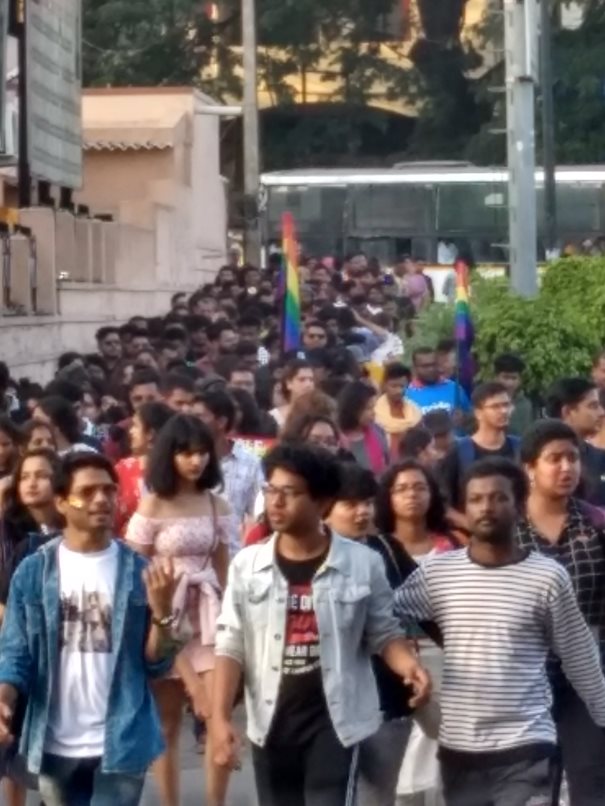

A year before I was born Bano called out to all the onlookers in lyrical ecstasy ‘Jo mai bhi hoon aur tum bhi ho’ (who I am too and so are you), the lights at the venue, the microphone were shut down by the authorities, but the audience stayed with her, singing with her till the end. Bano’s concert has been a memory I have constructed and nurtured from my grandfather’s account of the happenings. But more than the narrative and images, I feel it the look of belonging and inquilab in his eyes that I carry in mine. Dear onlooker, you’re welcome to join me as I walk on.
By Arjun Khera
By Arjun Khera
